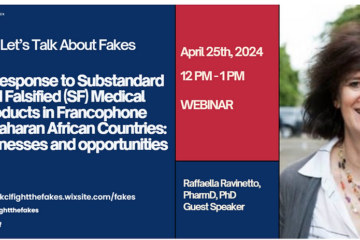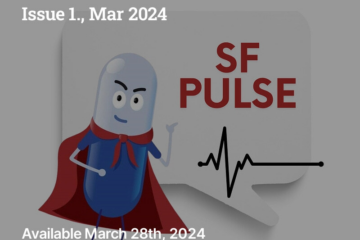Blog by Luc Besançon, Chief Executive Officer at Fight the Fakes partner the International Pharmaceutical Federation (FIP). This blog was originally posted by Fight the Fakes partner the US Pharmacopeial Convention.
Fake medicines kill an estimated one million people annually. We know, for example, that almost a third of Africa’s antimalarials supply is fake—and leads to 120,000 unnecessary deaths per year. Around the world, many others suffer health problems—sometimes permanent—because of these substandard, spurious products.
Medicines counterfeiting is a growing multibillion-dollar criminal activity not confined to the developing world. Consider: in 2008, medicines purporting to treat erectile dysfunction hospitalized 150 Singaporeans; four died and seven suffered severe brain damage. From 2007-2008, fake heparin killed 149 Americans. In 2013, another American died from taking 2.4-dinitrophenol sold on eBay as a weight loss product. Other consequences of fake medicines include resistance to treatment and the spread of disease.
It is tragic to contemplate the harm caused by something we believe will help us. Every year, INTERPOL seizes millions of fake medicines products and governments shut down thousands of websites that sell them. But it is not enough. This issue must be attacked from all sides. Despite the increasing death toll, recent surveys in Europe, Asia, and the United States reveal that the general public is ill-informed about the existence of fake medicines and their risks. With criminals using advanced technologies to counterfeit generic and branded medicines, it can be difficult to distinguish a fake medicine from its authentic counterpart.
Doctors, nurses, pharmacists, dentists and physical therapists continue to be concerned about fake medicines. In September, our respective global organisations, united as the World Health Professions Alliance, launched an interactive video campaign called “Counter the Counterfeits,” which calls upon the viewer to try to tell a fake medicine from a real one. Through this video, people confront a problem to which attention is not often paid. We want to reinforce the message that there is a real need to think deeply about medicines quality, and take threats to it seriously.
No Health Without Workforce
Pharmacists around the world have been working against fake medicines for years. Learn more about what the International Pharmaceutical Federation and its member organisations are doing to combat counterfeit medicines proliferation.
We are also always pleased to hear of efforts by other organisations such as the US Pharmacopeia. Attendees at the last World Congress of Pharmacy and Pharmaceutical Sciences heard about the launch of a special USP programme as part of its mission to ensure the quality and safety of medicines. Its review of the capabilities of field-based surveillance and screening technologies, intention to support users of these technologies, and stimulation of new technologies is to be recognised, especially since these technologies will have a positive impact on identifying poor-quality medicines and fake products.
In an interview at the congress, Lukas Roth, USP associate programme manager, mentioned the important need to look at the training of staff to use these technologies . This brings me to another line of attack: ensuring human resources for health are available and adequately trained. A skilled workforce is essential in the fight against fakes. While having technical standards is vital, a competent workforce is required to uphold them, translate them into practice, and apply them to improving health. We need an adequate health workforce to keep our supply chains secure, to detect fake medicines, to educate the public, and serve a variety of other health needs—like those currently provided for through the clinical roles of pharmacists worldwide. This is why FIP has invested greatly in this area.
In November 2016, we held a unique global conference in Nanjing, China, where global pharmacy leaders gathered to set milestones that will transform education and workforce development of pharmacists and pharmaceutical scientists, so that there is a sufficient and competent workforce to respond to current and future needs of patients and healthcare systems. The productive conference generated a global vision, development goals, and statements on pharmacy and pharmaceutical sciences education . A full report of the conference will be published next year.
There are many ways in which fake medicines can be prevented from harming our communities. To combat this threat requires effort from us all.


